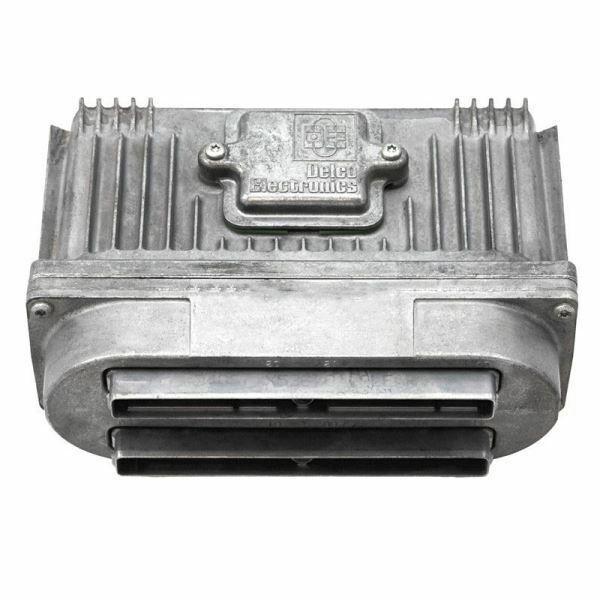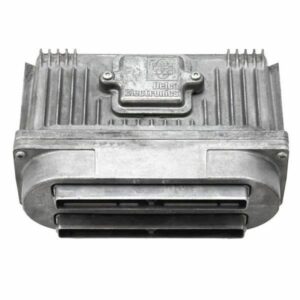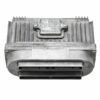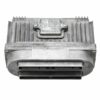Is Your 1997 GM Vehicle Running Rough?
If you’re dealing with frustrating issues like stalling at stoplights, erratic shifting, a persistent Check Engine Light, or a car that just won’t start, a failing Powertrain Control Module (PCM) is often the culprit. In my 20+ years turning wrenches, I’ve seen how a faulty PCM can turn a reliable car, like your 1997 Buick LeSabre, into a source of constant headaches. These modules are the brain of your engine and transmission, and when they start to fail, the symptoms can be confusing and intermittent.
“A customer’s ’97 Bonneville with the 3.8L V6 came in last month on a tow truck. It would crank but never fire up. They had already replaced the crank sensor and fuel pump. After confirming spark and fuel pressure were present, I hooked up my scanner and couldn’t communicate with the factory computer. That’s a classic sign. We swapped in a programmed PCM like this one, and the car fired up on the first try. It’s a common failure point on these otherwise bulletproof GM engines.”
The Simple, Reliable Solution for Your Vehicle
Forget expensive diagnostic fees and the hassle of getting your car to a dealership. This Powertrain Control Module is the direct, effective solution you need. We take all the guesswork out of the repair by programming the module specifically for your vehicle using your VIN. This ensures it has the latest GM software updates and is ready for installation the moment it arrives at your door. It’s a true plug-and-play fix.
Common Symptoms of a Failing 1997 LeSabre PCM:
- ✔ Unexplained Check Engine Light illumination
- ✔ Engine stalling or cutting out while driving
- ✔ Harsh or unpredictable automatic transmission shifting
- ✔ A no-start condition where the engine cranks but won’t fire
- ✔ Poor fuel economy and reduced engine power
- ✔ Communication errors with diagnostic scan tools
Plug-and-Play Installation: No Dealer Visit Required
You can do this job yourself with basic hand tools in under an hour. Our VIN-specific programming means you don’t need any special tools or a trip to the dealer to get your car running right again.
- Safety First: Disconnect the negative terminal from your car’s battery.
- Locate the PCM: On most of these 1997 GM models, the PCM is located inside the air filter box assembly in the engine bay. You may need to remove the air intake ducting to access it.
- Disconnect the Old Module: Carefully unplug the electrical connectors from the old PCM. Look for any locking tabs that need to be released.
- Install the New PCM: Mount your new, pre-programmed module in the same location and securely plug in the electrical connectors. You should hear a click as they lock into place.
- Reconnect and Start: Reconnect the negative battery terminal, reassemble the air intake, and start the vehicle. Your car is ready to drive!
Expert Pro Tip: Inspect Your Connectors
Before plugging in your new PCM, take a moment to inspect the vehicle’s harness connectors. Over the decades, the pins can develop a light film of corrosion (often a white or greenish powder) that can cause poor connections and mimic PCM failure. Use a small, soft brush and a dedicated electronics cleaner to gently scrub the pins on the harness side. Ensuring a clean, tight connection is critical for the long-term health of your new module.
Guaranteed Fitment for Your Vehicle
This module is a direct replacement for part numbers 16217058 and 16218070. It is compatible with a wide range of 1997 General Motors vehicles. Please provide your VIN upon purchase to ensure perfect programming for your specific model:
- Buick: Century (3.1L), LeSabre (3.8L), Regal (3.8L w/o supercharger), Skylark (3.1L)
- Chevrolet: Lumina (3.1L), Monte Carlo (3.1L), Venture (3.4L)
- Oldsmobile: Achieva (3.1L), Cutlass Supreme, Eighty Eight (3.8L w/o supercharger), Silhouette (3.4L)
- Pontiac: Bonneville (3.8L w/o supercharger), Grand Am (3.1L), Grand Prix (3.1L or 3.8L w/o supercharger), Trans Sport (3.4L)



